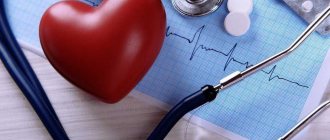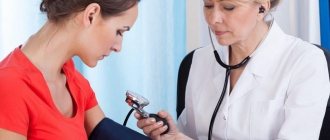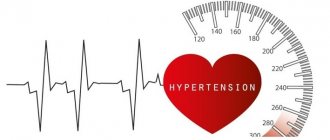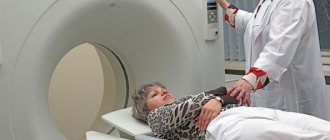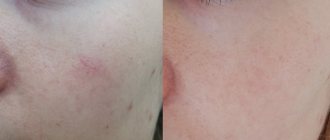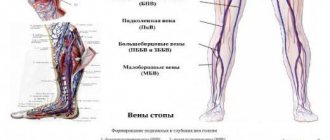Home Articles 5 diseases that you confuse with high blood pressure
When to run for a blood pressure monitor
Determining whether your blood pressure is normal is not easy. Comfortable, or “working” pressure is different for everyone. Some feel great at standard 120/80. For others, the norm will be 100/60 - and for them 120/80 will already be elevated. In general, it is considered that a person suffers from high blood pressure if it “steps over” the mark of 130/80. And numbers of 180/120 and above are already a reason to immediately seek medical help.
Increased blood pressure often occurs without symptoms or with very vague symptoms. This is why hypertension is often called the “silent killer.” Up to half of people who have high blood pressure simply don’t notice it. Those who do have some manifestations of hypertension may experience headaches, weakness and dizziness, chest pain, breathing problems, and hear a “heartbeat” in the ears.
Low blood pressure also often does not cause any symptoms. In general, hypotension is less dangerous than hypertension - if no manifestations of low blood pressure bother you, then this condition can be considered normal. However, sometimes a decrease in blood pressure provokes dizziness, weakness, nausea, a person’s skin turns pale, and their hands and feet are cold.
As you may have noticed, some signs of high and low blood pressure coincide, so it is almost impossible to determine a blood pressure disorder by eye. And the best way to understand whether you have manifestations of hypertension or hypotension is to simply measure your pressure with a tonometer.
However, there are pitfalls here too. First, you need to measure your blood pressure over a certain period (including when you feel well) to calculate your “working” norm. Secondly, it is advisable to take several measurements and take the average. Blood pressure is very sensitive to various changes in the internal and external environment, so the numbers on the tonometer may fluctuate - for example, if you are nervous, suddenly changed position, drank hot tea before the measurement, and so on.
When it's not pressure
Let's say you have already found out that you are prone to hypertension or hypotension. And once again you have symptoms that occur with problems with blood pressure, but you don’t have a tonometer at hand. Or let's say you were able to measure your blood pressure, but it appears normal. What causes of poor health should be ruled out before running to drink coffee or antihypertensive drugs?
Tension headache
After a long day at the computer, the back of your head feels tight, your head hurts, and you think it’s due to blood pressure? Not sure - maybe it's just a tension headache. This pain occurs from overstraining the muscles of the neck and shoulders, mainly if you sit in an uncomfortable position for a long time. The pain is bilateral, does not throb, and in principle this pain is quite tolerable. Often it is enough to warm up and change your body position. If you went out into the fresh air, took a walk, did gymnastics and a light massage of your neck and shoulders, after which the pain went away, most likely it was not associated with pressure, but with excessive muscle tension.
Decreased glucose levels
Symptoms similar to those of high or low blood pressure can occur with hypoglycemia - in other words, low blood sugar levels. It is commonly believed that blood glucose concentrations can only drop sharply in people who have diabetes, but this is not true. In a healthy person, low glucose levels may indicate that too much time has passed since the previous meal. Also, a drop in sugar can be caused by alcohol or certain medications.
Hypoglycemia is manifested by weakness and dizziness, difficulty concentrating, headache, chills, or excessive sweating. Sounds like "pressure"? And how! With hypoglycemia, there is one characteristic symptom - severe, possibly unbearable hunger. In addition, a person with low blood glucose levels sharply deteriorates in mood. So try, instead of the usual cup of coffee or green tea, which you use to raise your “pressure,” eat a chocolate bar or a sandwich. Or at least add a couple of spoons of sugar to your drink.
However, if you experience hypoglycemia too often, you should still take a blood sugar test to rule out diabetes. It’s better to also check the level of glycated hemoglobin - this indicator reflects the average concentration of sugar in the blood over the past few months and will help to “catch” a pre-diabetic state.
Anxiety disorder
An unpleasant condition similar to “pressure” can occur with anxiety disorders - especially generalized anxiety and panic attacks. Common symptoms of all anxiety disorders include dizziness, rapid heartbeat, and nausea. A person feels shortness of breath and difficulty breathing, his limbs become numb, sweaty or cold. During panic attacks, you may also experience chest pain, severe weakness on the verge of fainting, and a feeling as if your heart is pounding in your temples and is about to stop.
Increased anxiety is due to the fact that the body reacts too strongly to stress, releasing excess amounts of adrenaline into the blood. This, in turn, can cause an accelerated heart rate and increased blood pressure. However, the problems in this case are not with the heart and blood pressure, but with the nervous system. In the case of an anxiety disorder, the symptoms should be relieved not with blood pressure medications, but with sedatives: when the stress reaction is brought under control, high blood pressure and other symptoms will go away on their own.
Infections
Some infectious diseases occur with virtually no symptoms, and their manifestations can easily be attributed to poor health associated with blood pressure. For example, if you are infected with the herpes simplex virus, cytomegalovirus, or Epstein-Barr virus, you may experience weakness, chills (due to a slightly elevated temperature), and pain in the head and muscles.
If it really was the herpes simplex virus, then within a day or two you will notice a rash on your lips (or on your genitals, in the case of genital herpes). With other infections, there may be no external symptoms at all, so the cause of the lethargic state will remain a mystery for a long time.
So those who have been tormented by symptoms of “pressure” for a long time, but motherwort and coffee do not help, should get tested for hidden infections.
Diagnostic methods
Headache, nausea and vomiting, chills and fever are signs of infectious and non-infectious diseases that require different treatment methods. To prescribe the optimal regimen, it is important to determine the cause of these symptoms. After the examination, the doctor prescribes additional examinations that will help make a final diagnosis:
- Ultrasound of the stomach and intestines is the first way to determine inflammatory processes;
- endoscopic examination of the mucous membrane of the stomach and intestines;
- magnetic resonance or computed tomography – methods for diagnosing the brain to detect tumors;
- measuring blood pressure during the day;
- Ultrasound of the heart, electrocardiography - prescribed for suspected heart failure and other diseases;
- blood tests - will help determine inflammatory diseases and dysfunction of individual organs;
- specific blood tests to determine glucose levels.
At the Clinical Brain Institute, the examination regimen is prescribed individually. It does not include any unnecessary, insufficiently informative tests that will not help assess the overall picture of the disease. Modern equipment allows you to obtain the most accurate data necessary for diagnosis.
Hypothyroidism
The manifestations of hypothyroidism - decreased thyroid function - are in many ways similar to the symptoms of hyper- and hypotension. And basically we are talking about lethargic health and constant weakness. Also, people with hypothyroidism, like those who suffer from low blood pressure, have pale skin and cold hands and feet.
But those whose thyroid gland is not working well have additional symptoms. For example, they gain excess weight and cannot lose it. Their skin dries out and they lose their hair. Many people experience constipation, women's menstrual cycles are disrupted, and periods become more painful. Also, patients with hypothyroidism may experience severe irritability and develop depression. If lethargy and weakness have been present for a long time, perhaps it is not the pressure, but the level of hormones. It is worth taking tests to assess the function of the thyroid gland and, if necessary, starting hormonal therapy.
Causes of nausea, chills, headache
Headache, nausea, chills, weakness and other symptoms can also appear in a healthy person, in the absence of any disorders. They arise as a result of fatigue, stress, intense physical activity. However, they can also indicate dangerous diseases and conditions that require immediate medical attention.
Intoxication
The most common cause is food poisoning. Stale foods, unripe fruits and berries, and low-quality alcohol lead to the accumulation of toxins in the blood. They are carried throughout the body, deposited in organs and tissues, and in difficult cases they can enter the brain. Headache, nausea, vomiting, chills are a typical reaction to poisoning, an attempt by the body to remove toxins and toxic substances.
There are several types of poisoning that can occur at home or in connection with the patient’s professional activities:
- foodborne - happens to any person, but can also pose a great danger to health;
- alcohol poisoning is a separate type that can cause disruption of the central nervous system due to the accumulation of toxic products of ethyl alcohol metabolism;
- medicinal – develops with an overdose of certain groups of drugs;
- poisoning with toxic gases, including carbon monoxide, requires immediate hospitalization of the victim.
Treatment for poisoning is aimed at removing poisons from the body and restoring the normal functioning of the affected organs and systems. For this purpose, sorbents are prescribed - drugs that absorb toxins in case of food poisoning. Droppers with electrolyte solutions are also effective for reducing the concentration of toxic compounds in the blood.
Increased blood pressure
Chronic hypertension is a dangerous disease that is manifested by increased blood pressure. The diagnosis is made if systolic pressure remains at 140 mm. rt. Art., and diastolic – 90 mm. rt. Art. Constant filling of blood vessels makes their walls dense and insufficiently elastic, which causes increased stress on the heart. The walls of the heart in the initial stages of the disease are hypertrophied, dense, and then gradually become thinner. The danger for the patient is that with elevated blood pressure, the risks of myocardial infarction, stroke and other diseases increase significantly.
Chronic hypertension manifests itself in attacks. Physical activity, infectious diseases, and changes in weather conditions lead to a sharp jump in blood pressure. This condition is manifested by the following symptoms:
- acute headache, dizziness;
- weakness, shortness of breath, pain in the heart;
- nausea and vomiting;
- redness of the skin, possible appearance of small pinpoint hemorrhages due to rupture of capillaries.
The patient is advised to strictly dose exercise and follow a low-salt diet. At home, it is necessary to monitor blood pressure readings and, if necessary, take medications to lower it in a course. It is important to understand that a sharp increase in pressure can trigger the rupture of important vessels that carry blood to the brain, and the development of a hemorrhagic stroke.
Reduced pressure
Arterial hypotension is a chronic decrease in blood pressure to 90/60 mm. rt. Art. and less. The condition can be caused by a malfunction of the cardiovascular system, and may also manifest itself as a secondary disease. Its cause may be thyroid disease, heart failure, inflammatory diseases of the lining of the heart. In addition, hypotension develops with systemic intake of diuretics (diuretics), antiarrhythmic and antihypertensive drugs, and psychotropic drugs.
An attack of low blood pressure is accompanied by characteristic symptoms. These include:
- pressing headache, weakness and dizziness;
- chills, lethargy, drowsiness, decreased performance;
- pallor of the skin and mucous membranes;
- nausea, vomiting.
Patients with chronic hypotension are often dependent on weather conditions. Attacks occur during the off-season or in hot weather, when atmospheric pressure decreases. Persistent hypotension can cause chronic ischemia (lack of oxygen) of certain areas, including those located in the brain. However, if low blood pressure does not cause deterioration in health, the patient should not worry. This condition is the prevention of diseases associated with chronic hypertension, including atherosclerosis, heart attack and stroke.
Infectious diseases
Respiratory viral diseases are a common cause of headache, chills, and fever. Flu, ARVI, and tonsillitis in the initial stages cause weakness and a sharp deterioration in well-being. It is important to remember that they are transmitted by airborne droplets and at the first sign, stay in bed and limit contact with other people. As the disease develops, the patient exhibits the following symptoms:
- sore throat, redness of the mucous membrane;
- sneezing, coughing, wheezing during breathing;
- high fever accompanied by chills;
- headache.
Infectious diseases that affect the gastrointestinal tract can also cause headaches, chills, fever, nausea and vomiting. Viruses and bacteria multiply on the intestinal mucosa, causing digestive problems. Infection with salmonellosis, intestinal flu and other diseases occurs through consumption of poorly peeled vegetables and fruits, contaminated water, meat and eggs without heat treatment. For treatment, antibiotics and symptomatic drugs are used that relieve intoxication and restore intestinal microflora. Treatment in a hospital setting is recommended to allow round-the-clock monitoring of the patient and prevent further spread of the infection.
Migraine
Migraines are attacks of headaches, the origin of which is not fully understood. They are associated with vascular pathologies, insufficient blood supply to certain areas of the brain. A characteristic symptom is a “migraine aura,” which appears several hours before the onset of a headache attack. At this time, the patient feels a deterioration in health and the following symptoms:
- nausea and vomiting;
- dizziness, loss of coordination of movements;
- chills, pale skin and mucous membranes;
- decreased hearing and visual acuity;
- increased sensitivity to light, lacrimation.
At home, you can use painkillers that will improve your well-being during migraines. However, in acute attacks they are ineffective. After examining and determining the headache, the doctor prescribes special anti-migraine medications - they should be taken according to prescription to relieve pain. You should also avoid situations that can trigger a migraine exacerbation. For different patients, these include intense physical activity, fatigue, lack of sleep and disruption of routine, and sudden changes in climatic conditions.
Digestive tract diseases
Diseases of the stomach and intestines are one of the reasons why nausea, vomiting, headache and fever appear. They are often of inflammatory origin and are associated with improper or irregular nutrition. However, digestive disorders may be associated with congenital disorders: insufficient secretion of gastric juice, autoimmune processes and other reasons.
- Gastritis is a common disease, inflammation of the gastric mucosa. It is characterized by pain in the upper abdomen, nausea, and heartburn. Symptoms appear most clearly after overeating or prolonged fasting, as well as after eating fatty foods. With hypoacid gastritis, the level of hydrochloric acid in gastric juice is reduced, and with hypoacid gastritis, it is increased.
- Peptic ulcer – during diagnosis, ulcers are found on the mucous membrane of the stomach and duodenum. The condition is accompanied by heartburn, nausea and vomiting, and heaviness in the abdomen. It is important for the patient to follow the prescribed diet and take medications, since ulcers can increase in size and cause perforation of the stomach or intestinal wall.
- Pancreatitis is inflammation of the pancreas. It secretes important enzymes into the duodenum that are necessary to break down food. The causes of pancreatitis may be poisoning, regular alcohol consumption, or mechanical damage to the pancreas. The disease is accompanied by indigestion, heaviness in the abdomen after eating a heavy meal, and pain in the left side.
- Hepatitis is an inflammation of the liver parenchyma. If the disease is of non-contagious origin, it is associated with prolonged intoxication and poor nutrition. Separately, there is alcoholic hepatitis, which occurs with regular intake of even a small amount of ethyl alcohol. Infection with viral hepatitis occurs when the pathogen enters the bloodstream of a healthy person. The disease does not manifest itself in any way at the initial stages, but in advanced cases it can lead to the development of cirrhosis of the liver.
- Crohn's disease is an autoimmune disorder. Disruption of the immune system leads to inflammation of the mucous membrane of the small intestine, constant nausea and abdominal pain. Treatment is symptomatic, and some patients may require surgery to remove the damaged part of the intestine.
Diseases of the stomach and intestines can be diagnosed at any age. To prevent them, it is important to follow a diet and choose quality products. Fried foods, sweets, and a large amount of animal fats in the diet cause increased stress on the liver, stomach, and pancreas. If gastritis, enteritis, pancreatitis, or hepatitis are suspected, doctors must prescribe a gentle diet. It includes boiled vegetables and cereals, lean meats and fish. It is recommended to take food in small portions, at least 5 times a day.
Other reasons
Nausea, chills, weakness, headache are nonspecific signs that make it difficult to make a diagnosis without additional examinations. They can indicate a variety of conditions and disorders, including:
- diabetes mellitus is a chronic metabolic disease that leads to increased blood glucose levels;
- neoplasms – tumors located in the brain are of great danger;
- vegetative-vascular dystonia;
- renal failure - can be caused by intoxication of the body, systemic use of certain medications;
- the consequences of traumatic brain injuries appear even many years after the injury.
In some patients, nausea and headaches develop under severe stress or nervous tension. Preparing for exams, insomnia, anxiety before an important event negatively affects the state of the nervous system. To improve well-being, herbal sedatives and proper rest are recommended.
Folk remedies for chills
Home remedies include:
- tea with mint, lemon balm, infusion of lingonberry or strawberry leaves - have a sedative effect, replenish the lack of vitamins and microelements;
- warming massage with essential oils gives good results for chills without fever;
- Dilute vinegar or alcohol with water, soak a towel in the solution, and wipe the body from time to time;
- tinctures of ginseng, eleutherococcus, and Chinese lemongrass eliminate pathological processes in the body and increase immunity.
Despite the fact that folk remedies are considered safe, they have side effects and contraindications. Particular caution should be exercised by pregnant women and people suffering from chronic diseases.
Attention! Even if you managed to cope with the chills, this does not mean a complete recovery. Without treatment, its cause will cause repeated attacks and other complications. Accordingly, if unpleasant sensations appear again, you need to seek medical help and undergo an examination.
Causes of nocturnal hypertension
Only the person himself can accurately answer the question of why pressure begins to rise at night, since he knows what could have provoked an increase in vascular tone throughout the day, and therefore a possible jump.
Normally, the vagus nerve, a representative of the parasympathetic nervous system, is responsible for vascular tone at night. It ensures the stability of the physiological blood pressure cycle. A variety of reasons can lead to abnormal vasospasm.
Age
Increased blood pressure is not a natural result of aging. But age-related changes in the vascular wall (loss of elasticity, impaired renal function, calcification, sclerosis, atherosclerotic plaques, decreased ability of receptors to respond to changes, insufficient nutrition, oxygen supply to tissues) contribute to the development of hypertension, including nocturnal hypertension.
Particularly characteristic of age-related hypertension is a sharp increase in the systolic (cardiac) indicator at night, which is explained by persistent vasospasm as a result of wear and tear of the vasodilator mechanisms of arterial balance when the renin-aldosterone system is activated.
Therefore, older people have evening quarrels with loved ones, playing sports before bed, smoking, watching movies with loud music, reading past midnight, electronic gadgets, salty or sweet foods at night, alcohol, drinking a lot of water, changing climate or time zone (vacation). , business trips), night shift work - always provoke nocturnal hypertension with unpredictable consequences. After 45, a healthy lifestyle and giving up bad habits literally prolong life.
Apnea
An increase in pressure at night can be the result of a short-term cessation of breathing - apnea. The oxygen content in the blood drops: from 95% to 65% in just one minute. Hypoxia is perceived by the body as a stressful situation. All compensatory mechanisms are activated: the adrenal glands release hormones into the blood, cardiac output increases, arteries spasm, and the process of night rehabilitation is blocked.
In the morning, patients are irritable, they want to sleep, and they feel arrhythmia. In this case, the maximum high pressure occurs precisely at night and in the morning, but high blood pressure numbers are recorded throughout the day. The peculiarity is that the diastolic indicator increases predominantly, and conventional antihypertensive therapy has almost no effect. The situation may turn out to be critical, leading to cardiac arrest or death.
Nephropathy
Blood pressure increases at night with nephropathy. This is explained by the release of a large amount of renin into the blood, which triggers a complex chain of biochemical processes leading to hypertension.
Biologically active substances in the bloodstream cause generalized vasospasm and retain water and sodium. This is most often observed in diabetic nephropathy, which can be detected in the early stages if 24-hour blood pressure is regularly monitored. Thus, it is possible to avoid chronic renal failure (manifestations of hypertension are diagnosed before protein appears in the urine).
Panic attacks
Vegetative-vascular dystonia, with a predominance of the sympathetic nervous system, is accompanied by night crises or panic attacks. The mechanism is simple: an intense release of adrenal hormones into the bloodstream. Clinically, there is a sharp awakening, lack of air, profuse sweat, tachycardia, a feeling of anxiety and fear. The condition lasts from 10 to 30 minutes. After finishing, I want to urinate. The next 24 hours leave patients with a feeling of weakness and decreased performance.
- ABPM: what is it and why is daily blood pressure monitoring needed?
How are hypertension and insomnia related?
Directly. Violation of the rest regime (impossibility of night recovery) occurs when:
- nervous system dysfunction;
- hormonal imbalance;
- incorrect functioning of the hypothalamus;
- overvoltage;
- feeling unwell;
- arrhythmias;
- stress.
In this case, a vicious circle arises: high blood pressure provokes insomnia, and it provokes tachycardia, which again causes hypertension. Lack of sleep leads to a decrease in immunity, the patient begins to suffer from nightmares, migraines, and irritability.
Most often, patients are concerned about the question: why does blood pressure rise only at night, but behave normally during the day? However, taking antihypertensive drugs does not change the situation. This is an important point, for several reasons:
- incorrectly selected dose of medication;
- insufficient frequency of administration;
- incorrect combination of drugs;
- stress during the day;
- mental overstrain due to physical inactivity;
- smoking, drinking large amounts of coffee, alcoholic beverages;
- poor nutrition;
- jet lag due to working at night;
- watching movies, gadgets at night.
It is necessary to consult a doctor and change your medication regimen, which will prevent the risk of developing a heart attack or stroke.
Symptoms of chills with increased and decreased blood pressure
The feeling of tremor is familiar to almost everyone - trembling in the body, coldness in the extremities, chattering of teeth. When blood pressure decreases or increases, others may be added to these signs.
Important information: Risk factors for hypertension
| Disease | Associated symptoms |
| Hypotension | Migraine, spots before the eyes, feeling of weakness, increased sweating, pale face |
| Hypertension | Chest pain, tinnitus, increased heart rate, dizziness, increased anxiety |
| ARVI, inflammatory diseases | Fever, weakness, nausea, headaches |
The accompanying symptoms of chills in different pathologies can vary significantly. In case of kidney and bladder diseases, urination disorders are added, and in case of gastrointestinal disorders - diarrhea, vomiting, and abdominal discomfort.
Chills during stress
Serious nervous experiences lead to pressure surges, vasospasm, and intense hormone production. Due to such reactions, changes occur that lead to oxygen deficiency and deterioration of blood flow in peripheral vessels, which causes tremors. Stress and emotional overstrain are especially dangerous for hypertensive patients, as they worsen the course of the disease, aggravate unpleasant symptoms, and lead to the development of complications - heart attack and stroke.
For reference! Chills during nervous stress can also occur in healthy people, but frequent overexertion can lead to disruption of the central nervous system and cardiovascular system.
Chills with high blood pressure
Arterial hypertension (a condition when blood pressure rises to 140 to 90 mm Hg or more) disrupts the functioning of all organs and systems. The mechanism of development of tremor with high blood pressure varies. First of all, this is a spasm of blood vessels, which causes poor circulation, coldness in the extremities, and trembling in the muscles. High blood pressure disrupts the functions of the brain and the thermoregulation center, which causes involuntary trembling, tremors, and coldness in the extremities.
The appearance of chills may indicate the onset of a hypertensive crisis due to impaired blood flow in the vessels. In such cases, trembling is accompanied by dizziness, nausea, vomiting, weakness, and rapid heartbeat. If blood pressure readings are normal, but unpleasant symptoms are present, the reasons may be increased intracranial pressure. To measure it, you need to consult a doctor and undergo a special study.
Attention! Sometimes chills with hypertension appear after taking antihypertensive drugs. This indicates a violation of the dosage of drugs or the development of side effects, which also requires adjustment after consulting a doctor.
Chills with VSD
Vegetovascular dystonia is a complex of dysfunctions of the nervous system and peripheral vessels. It may be accompanied by a narrowing or dilation of blood vessels, which leads to different reactions of the body:
- As their lumen expands, the pressure begins to rapidly decrease, which contributes to congestion in the limbs and decreased blood flow.
- The narrowing of the vascular lumen is fraught with increased blood circulation, and the heart begins to work at an accelerated rate.
Violations lead to a serious deterioration in health, dizziness, and headaches.
Treatment options
In most cases, treatment is carried out with medication. The patient is prescribed medications that will help get rid of the cause of nausea, chills, and headache. Surgery is only necessary in exceptional cases. The following methods are most often effective:
- painkillers – necessary to improve well-being during acute headaches;
- substances to relieve intoxication (sorbents) - prescribed for food poisoning;
- antidotes - specific compounds that act as an antidote for certain types of poisoning;
- drugs to restore normal intestinal microflora - effective after intoxication, long-term use of antibiotics, diseases of the digestive system;
- anti-inflammatory drugs - the main stage of treatment of gastritis, pancreatitis, hepatitis and other diseases;
- specific antiviral therapy for viral hepatitis;
- a special diet is necessary to restore the functioning of the gastrointestinal tract.
At the Clinical Brain Institute, you can get recommendations from leading experts, as well as receive treatment in a hospital setting. Drugs are prescribed individually, taking into account the patient’s age and exact diagnosis, medical history and other factors. It is important to take them according to the prescribed regimen, as well as follow all other recommendations at home.
Prevention
It is necessary to prevent diseases that can cause such a reaction, primarily disorders of the cardiovascular system and ARVI. To do this, lead a healthy lifestyle, eat right, exercise, and exercise. It is very important to strengthen the immune system - drink vitamin complexes or folk remedies (garlic, honey, cranberries, citrus fruits). If chills or other alarming symptoms occur, you should visit a doctor to determine and eliminate the cause.
Chills are an unpleasant phenomenon that may indicate various diseases. These include the common cold or fatigue, as well as serious health problems. To eliminate the cause of the symptoms, you need to consult a doctor who will make a diagnosis and prescribe appropriate treatment.
What is the danger of chills with low or high blood pressure?
This reaction indicates a sharp rise or fall in blood pressure, which increases the risk of hypertensive crisis, heart attack, stroke and other complications. Chills with low blood pressure and hypertension can pose a serious health threat.
The spasm that occurs with tremor has a bad effect on the condition of the blood vessels and their function. The walls of the blood vessels thicken, their elasticity decreases, and atherosclerotic plaques form on the inner surface. The feeling of chills with hypertension and hypotension is the first sign of serious disorders of the cardiovascular system that require medical intervention and treatment.
As a result of such processes, pathological changes occur in the vessels, blood circulation slows down, and organs begin to suffer from oxygen starvation and insufficient nutrition.
Controllable factors for hypertension
The reasons leading to high blood pressure and which can be avoided are:
- obesity;
- bad habits (smoking and drinking alcohol);
- violation of the daily routine;
- insufficient sleep and rest;
- sedentary lifestyle;
- chronic stress;
- professional activities associated with nervous and mental overload;
- unhealthy diet (excess salt, fatty, smoked foods, unhealthy foods, etc.)
Attention!
Even in the absence of characteristic symptoms of high blood pressure (and a history of hypertensive crisis), it is necessary to have a tonometer at home to measure blood pressure. This is especially true for all persons over 40 years of age, regardless of gender and occupation.
Treatment methods for nocturnal hypertension
How to treat nocturnal hypertension depends on the stage of the disease. At the initial stage, lifestyle changes, diuretics (Clopamide, Furosemide) and sedatives of plant origin are sufficient. The main goal is to reduce the load on the blood vessels. Patients should completely review their diet and limit salt intake, especially after lunch. Avoid consuming caffeinated drinks and strong tea.
As a diuretic, you can use a decoction of rose hips, tansy, and mint. Taking sedatives can reduce brain activity and relax the central nervous system, thereby normalizing blood pressure. Alcohol tinctures of peony, valerian, and motherwort improve the natural process of falling asleep.
Drug therapy for stages 2-3 of nocturnal hypertension
Treatment of nocturnal hypertension in the second and third stages is carried out with medications. Shown:
- calcium antagonists (Corinfar, Felodipine) - help improve the condition of the tissues of the vascular walls;
- direct renin inhibitor (Methiopril, Capoten) - reduces the secretion of renin by the kidneys, helps reduce the rate, reduce the volume of circulating plasma;
- beta blocker (Matoprolol, Viske) - affects the receptors, the vessels deflate, weaken, and cease to provide resistance to the periphery.
Medicines that lower blood pressure should be taken schematically.
In each individual case, the duration of use and dosage are determined by the doctor. Independent uncontrolled use of such drugs can cause a crisis. Calcium antagonists should be taken with caution. The medicine has many side effects and can cause swelling of the face, arms, legs, and dizziness.
In addition, B vitamins are prescribed to restore central nervous system cells, and magnesium to normalize heart rate.
Diet
Table No. 10 is recommended for hypertensive patients. The diet allows for consumption:
- any types of vegetable crops, raw, boiled, steamed, stewed;
- fruit salads, fresh juices, smoothies;
- meat, fish and dairy products with reduced fat content;
- whole grain bread made from rye flour, crispbread;
- legumes, mushrooms, cereals;
- It is better to replace sweets with jam, honey, pure sugar (allowed to be consumed in small quantities).
Nocturnal hypertension of 2-3 degrees uses a salt-free diet as an additional measure in treatment. Everything that comes to the table of a hypertensive patient must be carefully checked. Severe swelling can be relieved by reducing your daily water intake.
After suffering a hypertensive crisis, it is better to refuse food for a day. You can eat fruits or vegetables; meat and fish broths are strictly prohibited. Dishes are prepared without salt. Together with the first courses, the daily water consumption rate is 1 liter.
